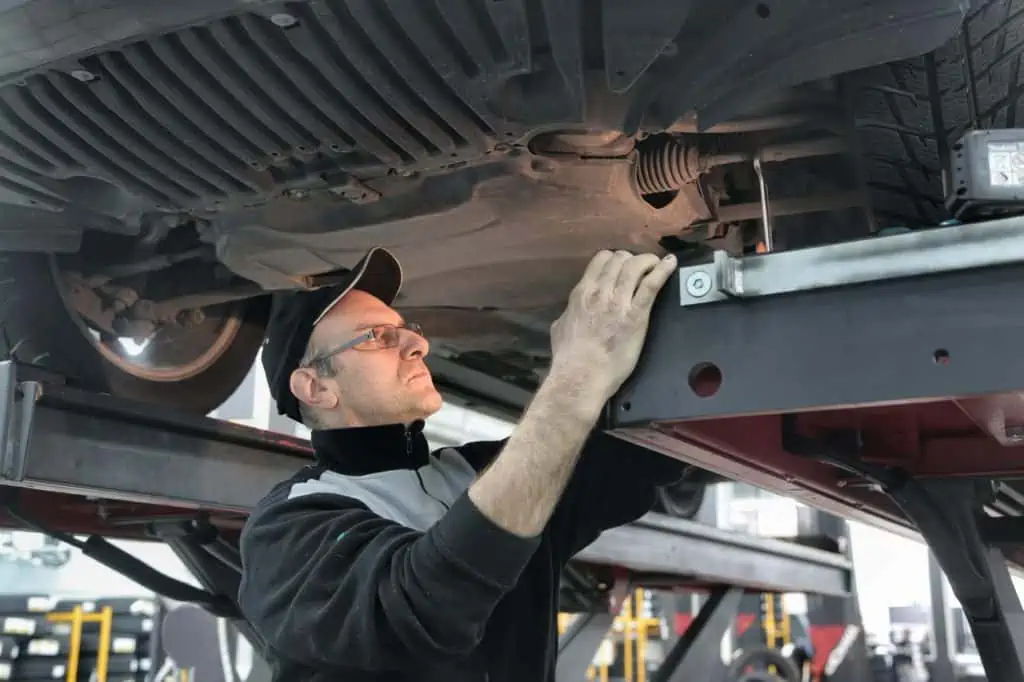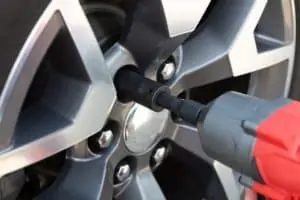Automotive Repair can be daunting for a lot of consumers and selecting the wrong shop can lead to problems down the road. This guide offers some tips on how to select the right shop and parts, so you get a quality repair to fit your budget.
- Tip #1 – Maintain Your Vehicle
- Tip #2 – Know Your New Car Warranty
- Tip #3 – Find the Right Repair Shop
- Tip #4 – Check the Parts That Are Used on Your Car
- Tip #5 – Fix Everything That Needs Fixing
- Tip #6 –Find Financing if You Need To
#1 – Maintain Your Vehicle
Maintaining your vehicle will save you a ton of money. And don’t just change the oil. Read and follow the factory service guidelines.
That means rotate your tires, align your vehicle and check and change the fluids as needed. And don’t good quality fluids. Saving $30 on an oil change is not worth hundreds of dollars you might spend repairing your vehicle if you use the wrong oil.
If need to find the maintenance intervals, check your owner’s manual. You can find it in your glove box or online.
#2 – Understand Your Warranty Coverage
The era of 3 year or 36,000-mile bumper to bumper warranties is over. Most new cars have many different types of warranty coverage different mileage limits.
You may be pleasantly surprised. Some automakers offer bumper to bumper coverage for 10 years and lifetime powertrain warranties. So, get to know your coverage for peace of mind.
Vehicle warranties include different coverage for different systems. Read your owner’s manual and understand your warranty. And hybrid or electric cars warranty covers more repairs than a standard car. Also, check your warranty to see if it covers roadside assistance.
If you have questions, autoconsumer.com offers general warranty information by vehicle manufacturer. The best source of information are neutral web sites. The FTC offers a good summary.
#3 Finding the Right Automotive Repair Shop
The worst time to choose a shop is when you’re stuck on the side of the road. Having a go-to shop can make a big difference between a good and bad experience. As a general rule, it is best to choose a shop based based on your vehicle.
As you look for a shop, remember that the most important person is the one fixing your car. So, look for ASE and I-CAR certificates. And ask how long the technicians have been fixing cars.
Shop Certification
Also, look for shop certifications. Automotive repair industry organizations such as I-CAR will offer overall shop certifications if technicians are ASE certified, have completed training and are experienced.
Go to a Specialist
Transmission shops do a lot of transmission service, so they are a good place to go for a transmission repair. similarly, brand specialists tend to have deep knowledge of the cars they fix.
So, find a shop that specializes in your brand of vehicle. And don’t judge a shop by its size. It’s common for a top caliber master certified technician to own a shop. So, sometimes small can be good.
Get Automotive Repair Referrals
Online reviews tell you a lot. And word of mouth is often as good as gold. If you are looking for a shop, spend some time reading online reviews and talk to friends you trust.
Not all Car Dealerships are the Same
Car dealers often have the best technicians. But not all car dealerships are the same.
Find a dealership with a good reputation. The best source of information are online reviews and factory awards. Top dealers can earn a “President’s Award” or “Top Dealership Award”. These are not considered lightly and indicate the quality of service you may receive.
#4 – Ask about the Parts
Don’t get your car fixed with bad parts. There are a lot of parts to choose from and a lot of misinformation. Here are some pointers when looking at parts used in your repair.
Automotive Repair shops often choose the safest parts for their business. Studies that some automotive repair shops choose parts based mostly on profitability. So, understand the quality of parts going on your vehicle.
And, you have a right to have the replaced parts returned to you if you want to validate the wear. The major types of parts you will see are:
- OE Parts – These are the same parts that came on your vehicle when it was new.
- Supplier Brand – Quality parts that are made by the manufacturer that supplied the automaker. These are quality parts but should not necessarily equal to OEM parts unless they carry the automaker brand.
- Quality Aftermarket Parts– These are name brand aftermarket parts. Some of the most common brands include NAPA, CARQUEST, Bosch, Denso and NGK. Your shop usually offers these parts with a warranty.
- Generic Aftermarket – These are less budget aftermarket parts. These are low cost and may be exactly what you need. Shops often install these parts without a warranty.
- Rebuilt Parts: Parts where broken components have been replaced.
- Remanufactured Parts: Like new parts that have been disassembled and rebuilt to be like new. Remanufactured transmissions are an example of how remanufactured parts can save you money.
#5 Fix Everything that Needs Fixing
Don’t put off repairs. A good shop will perform an inspection on your vehicle and explain needed services. And while this can be used to sell additional repairs, it is a useful process if you want a vehicle health check.
An inspection will usually show the status of key components and tell you what repairs are needed and components that are wearing out. It can be costly to wait on repairs so carefully consider the repair advice.
#6 Financing Automotive Repairs
Car repairs can be costly, and waiting can be a mistake. Fortunately, repair loans are available to fund repairs. If you need a loan, ask your shop or search online.






